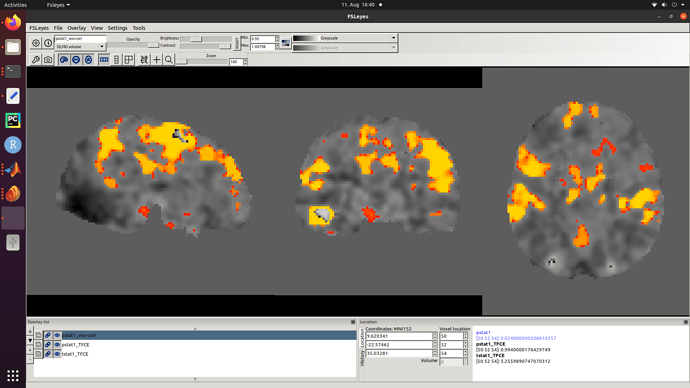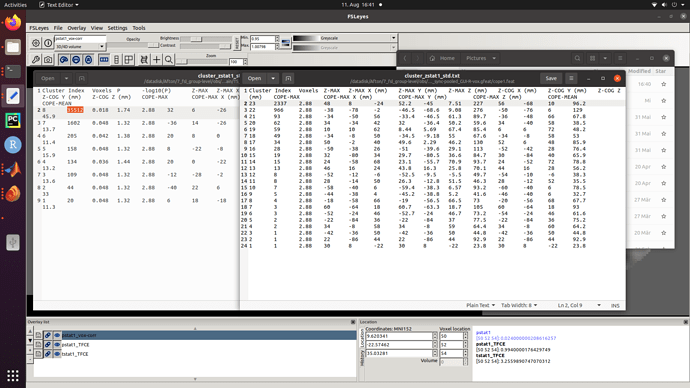Dear Neurostars community,
I have a question regarding the cluster sizes when using FSL randomise with TFCE.
I get very large clusters when applying TFCE (~35,000, see screenshot), which does not appear when applying, for example, voxel-based correction (~2,300, screenshot). I have attached screenshots of the tstat and pstat (red/yellow) map from the randomise with TFCE and the pstat from the randomise with voxel correction (black). There are also the cluster tables (TFCE-left, voxel-right) showing the cluster sizes.
I understand that TFCE is more robust and would likely lend to greater clusters sizes. However, the result seems strange that it would be so large (i.e., nearly 15x larger).
Is this indeed a strange outcome, or might it be plausible? Are there any other checks I can run?
For reference, the command from the log file:
TFCE: randomise -i filtered_func_data -o /stats -m mask -d design.mat -t design.con -e design.grp -n 500 -T --film
voxel: randomise -i filtered_func_data -o /stats -m mask -d design.mat -t design.con -e design.grp -n 500 -x --film
I get similar cluster sizes (or even larger) when I run it with more permutations.

